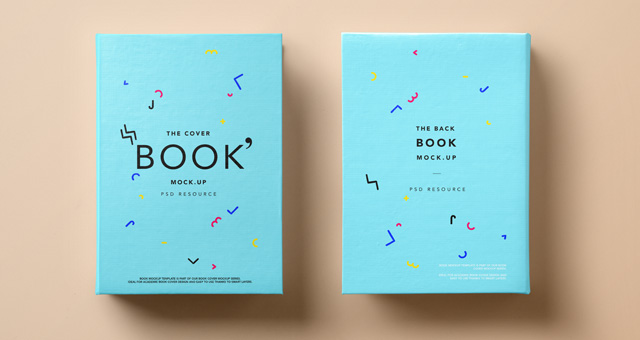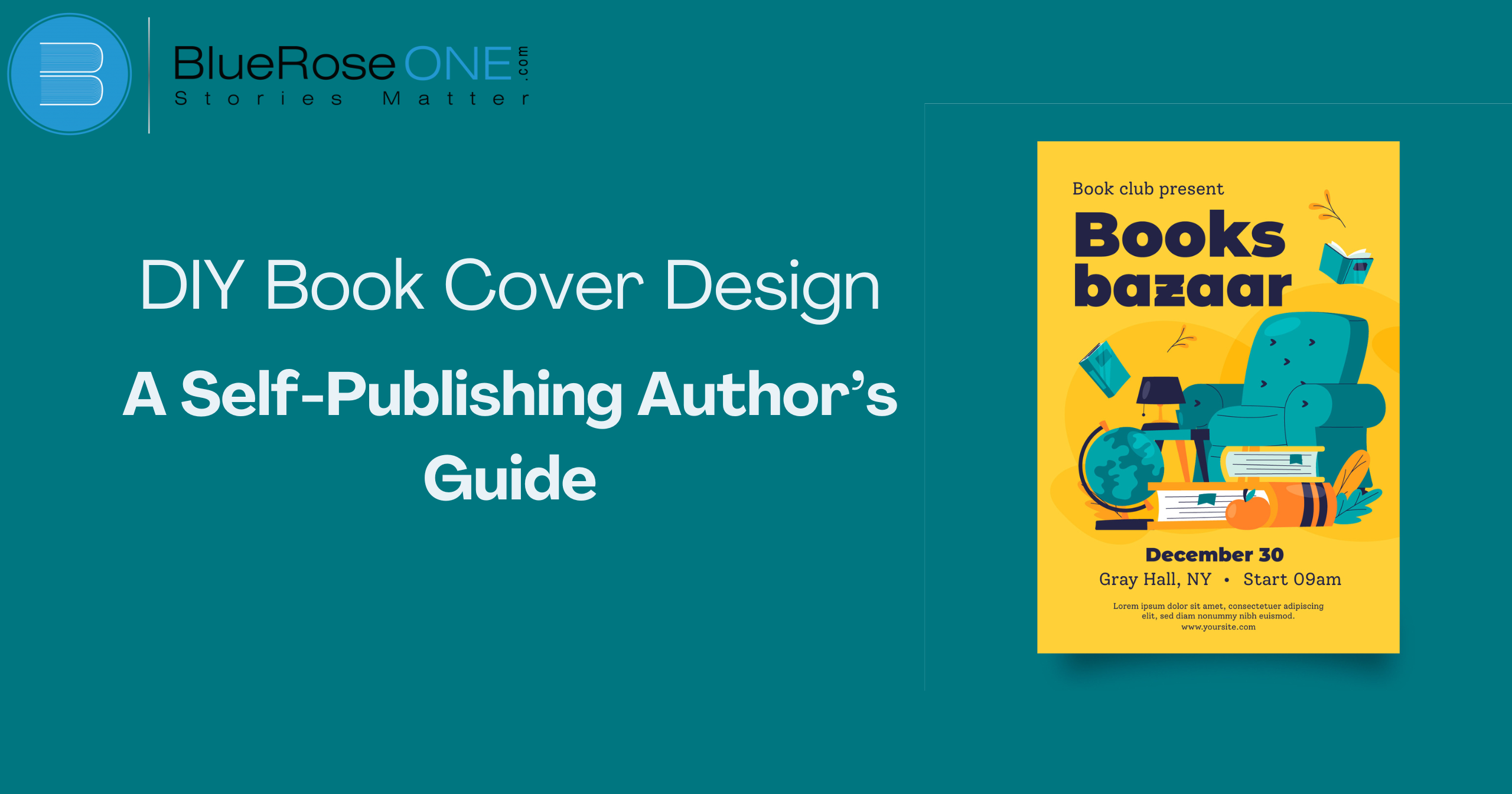Have you ever considered creating your own book cover art? Developing an engaging book cover is not only a fun creative endeavour for self-publishing authors, but it’s also an essential part of book marketing. Let’s delve into the realm of do-it-yourself diy book cover design and examine how to create a captivating cover that entices readers.
Why Book Cover Design Matters
First Impressions
Initial impressions matter a lot, particularly in the cutthroat world of self-publishing. Your book cover is the first thing potential readers see as they sift through the hundreds of titles; it conveys the genre, tone, and calibre of your writing right away.
A skillfully designed DIY book cover can attract and pique readers’ interest, encouraging them to pick up your book and read through its contents.
On the other hand, no matter how good the story inside is, a badly designed cover can turn off readers. Putting time and attention into the design of your book cover increases the visual appeal of your book and makes it far more marketable.
Marketing Potential
Your book’s cover serves as the reader’s initial impression in the crowded field of self-publishing. A well-designed cover is more than simply a pretty picture; it’s also an effective marketing tool.
When done correctly, a DIY book cover design can greatly increase the visibility and attractiveness of your work. A polished book cover can effectively communicate the genre, tone, and calibre of your work, luring readers in to continue reading.
You may effectively convey the core of your tale and stand out in a crowded industry with the correct design, which can eventually increase sales and strengthen your author brand.
Understanding Book Cover Elements
Front Cover
Since it makes the initial impression on potential readers, the front cover is the focal point of any do-it-yourself book cover design. It’s the intersection of creativity and marketing, fusing attention-grabbing typography and images to grab readers’ attention right away.
A well-designed front cover should quickly and easily communicate the genre, tone, and main idea of the book. Important components are the book’s title, author name, and imagery that corresponds with its subject matter.
Effectively balancing these elements can have a big impact, grabbing readers’ attention and enticing them to keep reading. A captivating front cover takes time to create, but it’s essential for any self-publishing author hoping to stand out in a crowded market.
Spine
When it comes to DIY book cover design, the spine of your book is quite important in drawing the reader’s attention, particularly if it is tucked away on a shelf with other books.
Not only does a well-designed spine look good, but it also makes sure that your book title, author name, and occasionally a little image or emblem are readable and easily apparent. For digital thumbnails as well as real bookstores, this is crucial.
To produce a professional and eye-catching spine that enhances the overall design of your book cover, pay special attention to font selection, color contrast, and spacing. Keep in mind that every little detail matters when creating a DIY book cover to make your work stand out.
Back Cover
An important feature of a do-it-yourself book cover design is the back cover, which doubles as a marketing and informational hub. It usually has an intriguing synopsis that draws readers in and entices them to read the rest of the book.
In addition, author biographies, reviews, and ISBN data are frequently included on the rear cover. Writing a professional back cover can have a big impact on how appealing and credible a book is for self-publishing authors.
The rear cover accentuates the book’s overall appeal and matches the front cover by striking a balance between interesting design and educational material that draws readers in from all sides.
You may also like: 100+ Adjectives That Start with C (With Definitions & Examples)

Tools and Resources for DIY Book Cover Design
Graphic Design Software
It’s essential to have the correct graphic design software while doing DIY book cover design. Applications such as Adobe Photoshop, Illustrator, and InDesign provide a full toolkit for producing covers of high quality.
Wide-ranging customisation is possible with these industry-standard features, ranging from complex typography to fine-tuned image manipulation. GIMP and Canva are great options for anyone looking for more affordable options. They provide comprehensive capabilities and user-friendly interfaces at minimal or no expense.
Self-publishing authors can create book covers that are visually appealing and ready for the market by using these graphic design software solutions, which will help them stand out in a crowded market.
Stock Images and Graphics
A great resource for creating your own book cover design is stock photos and graphics. Your book’s attractiveness can be significantly increased by these excellent images, which will help it stand out on crowded book shelves and digital platforms.
Many different genres and themes are covered by the enormous selection of photos and graphics available on websites such as Adobe Stock, Unsplash, and Shutterstock.
Without spending a fortune, you may design an eye-catching and polished book cover by carefully choosing appropriate images. For self-publishing authors who want to produce an eye-catching book cover design, these resources offer the versatility and diversity necessary, regardless of whether they require elaborate artwork or striking photos.
Typography Resources
In DIY book cover design, typography is essential since it provides the visual language that can draw readers in at first glance. Platforms like as Google Fonts and Adobe Fonts provide self-publishing authors with an extensive collection of premium and free typefaces suited for all genres and styles.
Moreover, distinctive and superior fonts are available on websites like Font Squirrel and DaFont, which can help your cover stand out.
By using these typography resources, writers can make sure their book covers are properly designed and aesthetically beautiful, which is important for leaving a lasting impression in the cutthroat self-publishing market.
You may also like: WhiteSoke Review: Features, Pricing, Pros and Cons
Steps to Designing Your Own Book Cover
Conceptualizing Your Cover
In the exciting world of self-publishing, drawing people in with an eye-catching book cover is crucial. The first and most important stage in creating a DIY book cover is “Conceptualizing Your Cover”.
Go deep into your story to extract its essence, and use that to inform the cover’s graphic components. Think about your book’s tone, themes, and intended readership; each should work together to communicate the essence of the narrative.
This preliminary ideation phase lays the groundwork for a cover that not only showcases your story but also compels readers to explore your masterwork of DIV Book cover design.
Visual Inspiration and Research
Using visual inspiration and doing extensive research are essential when starting a do-it-yourself book cover design project. Visual inspiration provides a clear vision for the design process, acting as the spark that fuels creativity.
Immersion in a variety of visuals stimulates creativity, whether it be through the exploration of colour schemes, typographic designs, or theme components. Conscientious research guarantees that the cover conforms to market trends, audience tastes, and genre norms at the same time.
Authors can create DIV book covers that enthral readers and capture the spirit of their literary works by combining inspiration and knowledge.
Choosing the Right Imagery
Photography vs. Illustration
Choosing the appropriate imagery is crucial when it comes to DIY book cover design in order to get readers’ interest. Consider the book’s tone and message when choosing between illustration and photography.
Photographs add realism and authenticity by providing readers with intimate glimpses into everyday life. However, art offers limitless creative freedom, enabling one-of-a-kind interpretations and stylized images that are specific to your story.
Making sure your artwork reflects the spirit of your “DIV Book cover design” is essential to creating an engaging cover, regardless of whether you choose to use the visual impact of an illustration or the raw strength of a photograph.
Legal Considerations
Before embarking on a DIY book cover design project, it is crucial to take legal considerations about pictures into account. Although it could be alluring to save any captivating picture from the internet, writers need to be careful to prevent copyright violations.
Choosing DIV book cover design entails negotiating complicated licensing and permissions requirements. Make sure the pictures you choose are ones you have permission to use, properly licensed, or royalty-free.
Ignoring these legal intricacies can damage your reputation as a self-published author and result in expensive legal disputes. Recall that legality is just as important to the success of your book as its literary value.
You may also like: List of Top 10 Jhumpa Lahiri Books of All Time
Typography Tips for Book Covers
Font Selection
The choice of typeface is crucial when creating a handcrafted book cover. Fonts are your book cover’s visual language; they quickly convey the tone, genre, and personality of the work.
Choose fonts for your DIV book cover design based on the concept and intended readership of the work. Take into account elements like readability, legibility, and visual attractiveness.
Whether you want a sleek script, a contemporary sans-serif, or a traditional serif, pick typefaces that will draw readers in and improve the entire design. Keep in mind that the right font can take your book cover from plain to spectacular, drawing readers in and encouraging them to start reading.
Hierarchy and Readability
Learning the craft of typography is essential for anyone interested in creating DIY book covers, especially in terms of hierarchy and readability.
The DIV book cover design principle places a strong emphasis on the value of designing covers that are eye-catching and effectively communicate key information to readers. Nothing is lost in the design by creating a hierarchy through font sizes, styles, and placement that leads the viewer’s eye fluidly from title to author name to subtitle.
Writers may make their book covers stand out on online book shelves and encourage prospective readers to turn the pages by emphasising readability.
Common Mistakes to Avoid
Overcomplicating the Design
When it comes to DIV book cover design, simplicity frequently wins out. On the other hand, it’s simple to overcomplicate the design process.
In their haste to present every detail of their work, authors sometimes overdo the images or ornate typefaces on the cover, which lessens the effect of the piece.
Keep in mind that a book cover’s most important quality is its capacity to grab the reader’s attention and sum up the plot in a glance. Self-publishing authors may make sure their
DIY book cover design stand out among the clutter and entice readers to explore their literary universe by maintaining a design that is clear, succinct, and focused.
Poor Quality Images
One of the worst mistakes a writer can do when it comes to DIV book cover design is to accept low-quality photos. Potential readers will first encounter your book cover when they see it, so if the imagery is unclear or poorly rendered, it will reflect poorly on you as a professional and may turn them off.
Images that are grainy or pixelated lose visual appeal and are unable to successfully communicate the main ideas of your story.
The visual impact of your book cover can be enhanced by using expert graphic design software or investing in high-resolution, professionally taken photographs to entice readers to turn the pages.
Ignoring Genre Conventions
Entering the exciting but intimidating world of self-publishing can be experienced through book cover design. Disregarding genre conventions is a typical mistake self-publishing authors make, though. Though inventiveness has no boundaries, defying accepted genre conventions can work against a book’s chances of becoming a bestseller.
Consider genre norms as markers directing readers to the books they want to read. Through comprehension and adherence to these standards, writers can proficiently convey the core of their work to the intended readership, amplifying its prominence and allure.
Recall that adhering to genre standards enhances creativity by placing your work in line with reader expectations and preferences rather than inhibiting it.
Finalizing and Printing Your Cover
Proofing and Feedback
When it comes to self-publishing, finishing up your DIY book cover design is an exciting stage, but it’s important to take your time. In order to make sure your cover captures the spirit of your DIV book cover design, proofing and feedback are essential.
Spend time carefully going over every element, from font to artwork, to make sure it fits the genre and target readership of your book. Ask for input from dependable specialists or peers to obtain new insights and spot any mistakes that were missed.
Recall that the additional time and effort put into proofreading and receiving comments will turn your cover from passable to excellent, drawing viewers in right away.
Working with Printers
It’s time to bring your perfectly crafted book cover design to life in print after you’ve put your all into it. The first crucial step in creating a DIY book cover design is dealing with printers.
Make sure your creation looks amazing on paper by choosing a printer who specializes in DIV book cover design. To ensure that your design is accurately captured, look for a printer that uses premium materials and cutting-edge printing processes.
Effective communication is essential; work closely with the printer of your choice to ensure that the finished result meets or surpasses your expectations.
Conclusion
Creating your own book cover is a fulfilling endeavor. The combination of originality and business acumen can have a big impact on how well your book does. These guidelines will help you design a cover that will not only look amazing but also increase sales of your book.
















